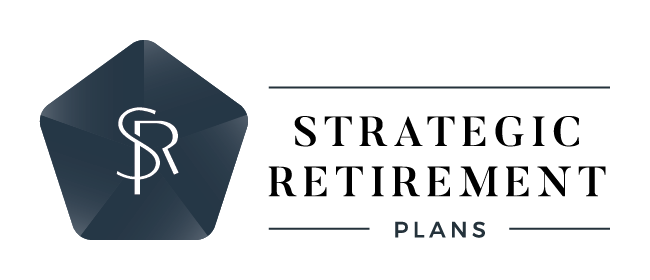Presented by Gabe Lapito, CFP® and Ryan Gomendi, CFP®
As inflation has risen and stock prices have fallen, we’ve heard a lot of buzz about a bear market recently. And now we’re officially here. Traditionally defined as a period during which stock prices fall 20 percent or more from recent highs, a bear market indicates significant market and economic stress. While the Nasdaq has been in a bear market for quite some time, that index is made up primarily of technology stocks, which are notoriously volatile. Now the S&P 500 has also hit this milestone. Since this index includes the largest and best-known companies across all industries, the price drops here are a better indicator of overall market stress.
And the stress is real, as we can see in the headlines. Inflation is at a 40-year high, gasoline is reaching unprecedented prices, and we have a war in Europe for the first time in 80 years. This is a difficult period and, if you consider all these factors, a substantial market reaction makes sense.
The current bear market, however, isn’t really about what you see in the news headlines. Instead, it reflects what’s happening in the economy and in economic policy. To understand what’s really happening—and where we’re likely going—we need to take a step back from the headlines.
A Brief History of Market Drops
The current decline, while sharp, is fairly typical in market history. Similar declines often come after periods of sustained large gains like the ones we’ve had in recent years. It’s normal for the market to give back some gains before resuming growth. We saw similar sharp declines in 2020, 2018, 2011, 2009, and 2008, only to see the market recover. Declines are certainly scary, but they are also normal, short-lived (as we saw in 2020), and even necessary. While there are no guarantees, the sharper the drop, the quicker the recovery tends to be.
Even though declines generally set the stage for future growth, that doesn’t answer the question of how we get from here to there. For that answer, we have to look at the economy itself. Understanding what’s driving this decline will enable us to understand how it will end.
How We Got Here
The major factor affecting the economy right now is inflation. While the economy continues to grow, inflation is slowing that growth. This round of price increases started during the pandemic, with stimulus payments driving more spending, even as supply chains contracted. More recently, however, inflation has shifted to a more permanent—and more threatening—trend, driven by housing and services. That shift has made it a much higher risk than it appeared even a month or two ago.
On top of that, we have additional factors keeping inflation high. The war in Ukraine has driven oil and food prices higher around the world, and that will continue as long as the war continues. Higher energy prices affect everything else, and in conjunction with world events, make the inflation risk much higher than many had previously thought.
Inflation is something that can sink an economy, especially if it becomes entrenched, as we saw in the 1970s and 1980s. There are now signs that inflation expectations are rising, and that’s forcing the Federal Reserve (Fed) to act by raising interest rates more quickly. The hikes are resulting in higher mortgage and auto loan rates, among other things. This tactic is designed to slow the economy, which could potentially create a recession, but avert even more severe damage in the future.
Despite the good long-term intentions, however, the potential economic damage right now is real, and markets are reflecting that. Beyond slowing the economy and potentially reducing corporate earnings, higher rates also directly reduce the prices investors pay for stocks. This is a double whammy which has resulted in the fast market drawdown this year. High inflation caused high interest rates, which slowed the economy and pushed stock valuations down.
A Look Ahead
What does this mean for the future? The good news is that the Fed is publicly committed to stopping inflation. That will reassure markets, and possibly reduce how high interest rates need to go. The bad news is that this will still require higher interest rates—we need to watch for these hikes. Interest rates are the keys to both economic growth and stock market performance.
Of course, there are many interest rates, but the critical rate that helps determine stock valuations is the yield on the 10-year U.S. Treasury note. That rate spiked in recent days, driving the most recent drawdown in the stock market. But here’s some good news: while short-term interest rates are likely to keep rising, longer-term rates don’t necessarily follow suit as the Fed tightens policy. As growth slows, the likelihood of a recession in that 10-year period rises, and rates can fall. As such, while the Fed is raising rates—and that impacts the markets—once the market sees those rate hikes ending, the 10-year rate will start to drop. This point will likely mark the start of the stock market recovery.
We don’t know how long or deep this bear market will last, but we do know it will end. And, as with every other bear market, including the Great Financial Crisis and the 2020 pandemic, we know the U.S. economy and markets will adapt and recover.
Keep Calm and Carry On
This is a scary time and, looking at your statement, perhaps you’re realizing your risk tolerance is lower than you thought. If you’re concerned about your portfolio, please call our office so we can help you understand why you own what you do. Investing is a long-term project and, in the long term, we have seen bear markets before and recovered nicely. It’s just a matter of time before history repeats itself.
Strategic Retirement Plans is located at 12 Avanta Way, Billings MT, 59101 and can be reached at 406-256-5121.
Information contained in this message may be confidential or privileged. If you are not the intended recipient or an individual designated to deliver this message, you may not copy or redistribute this message. If you have received this message in error, please notify the sender and delete the message from your system. Although information contained in this message has been obtained from sources believed to be reliable, we do not guarantee its accuracy or completeness.
Advisory services offered through Commonwealth Financial Network, a registered Investment Adviser. Fixed insurance products and services offered by Strategic Retirement Plans are separate and unrelated
Authored by Brad McMillan, CFA®, CAIA, MAI, managing principal, chief investment officer, at Commonwealth Financial Network®.
© 2022 Commonwealth Financial Network®


